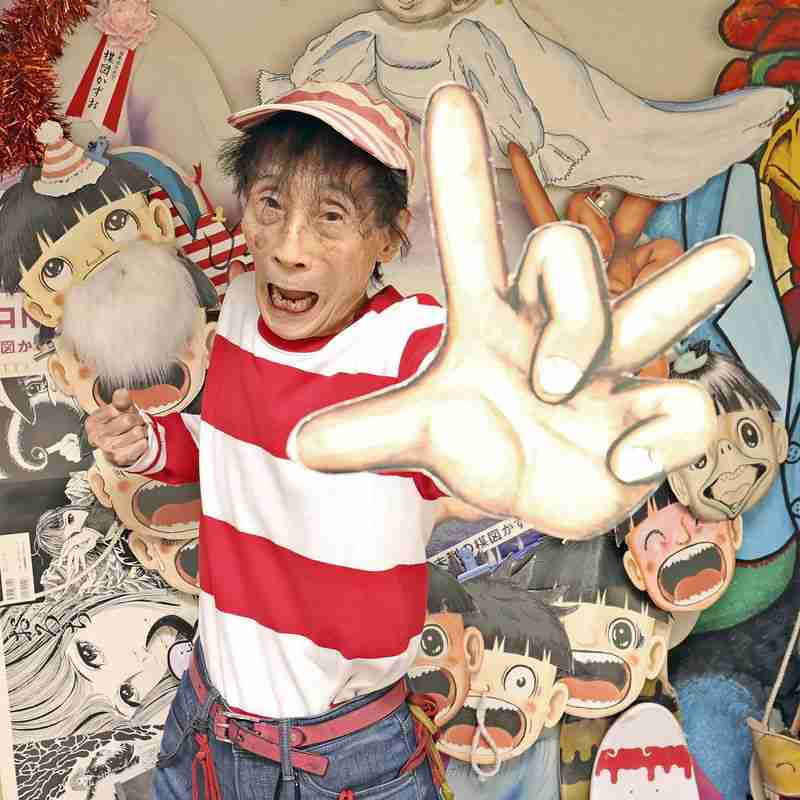
Kazuo Umezz strikes the signature pose of Makoto-chan, the lead character in the eponymous comedy manga, at his studio in Tokyo in January.
11:00 JST, March 4, 2022
Kazuo Umezz is a manga legend. During a long and successful career, the 85-year-old has crafted a slew of famous titles and his influence on other mangaka runs deep.
His first work in 27 years is currently on display in “Kazuo Umezz The Great Art Exhibition,” which runs through March 25 at Tokyo City View, an art space on the 52nd floor of the Roppongi Hills Mori Tower in Minato Ward, Tokyo.
The new work comprises a series of 101 paintings, which serve as a loose kind of sequel to one of his most famous manga, “Watashi wa Shingo” (My Name is Shingo).
So why has Umezz — widely regarded as a master of horror manga — taken this leap into the world of fine art?
“I requested that the exhibition have the word ‘great’ in the title,” Umezz said. “You can take that as meaning great art, or think of it as a spectacle, like a grand circus. I like active and high-spirited things.”
The exhibition is no retrospective, however, and original artworks from his past manga are nowhere in sight. Rather, the show pivots around the painting series, titled “ZOKU-SHINGO Small Robots Shingo Museum.”
The paintings feature dialogue and stories and can be read as a manga with 101 scenes. The dense brushwork and strong colors are overwhelming. The works also contain many elements that sum up Umezz’s creative world.
“Personally, I’m full of confidence,” he said, in an utterly convincing manner.
Prestigious award
“Watashi wa Shingo,” which ran from 1982-86, tells the story of an industrial robot that develops a soul and goes on a wondrous adventure in search of his human “parents.” Fans of the manga will find the new paintings irresistible, due to the many familiar references.
In the original manga, elementary school students Satoru and Marin receive a “revelatory message” from a computer telling them to “jump off the top of 333” to fulfil their wish of having a child together. Consequently, they jump from the top of Tokyo Tower, which is 333 meters tall. As they leap, however, Satoru loses a shoe — an event that plays an important role in the paintings.
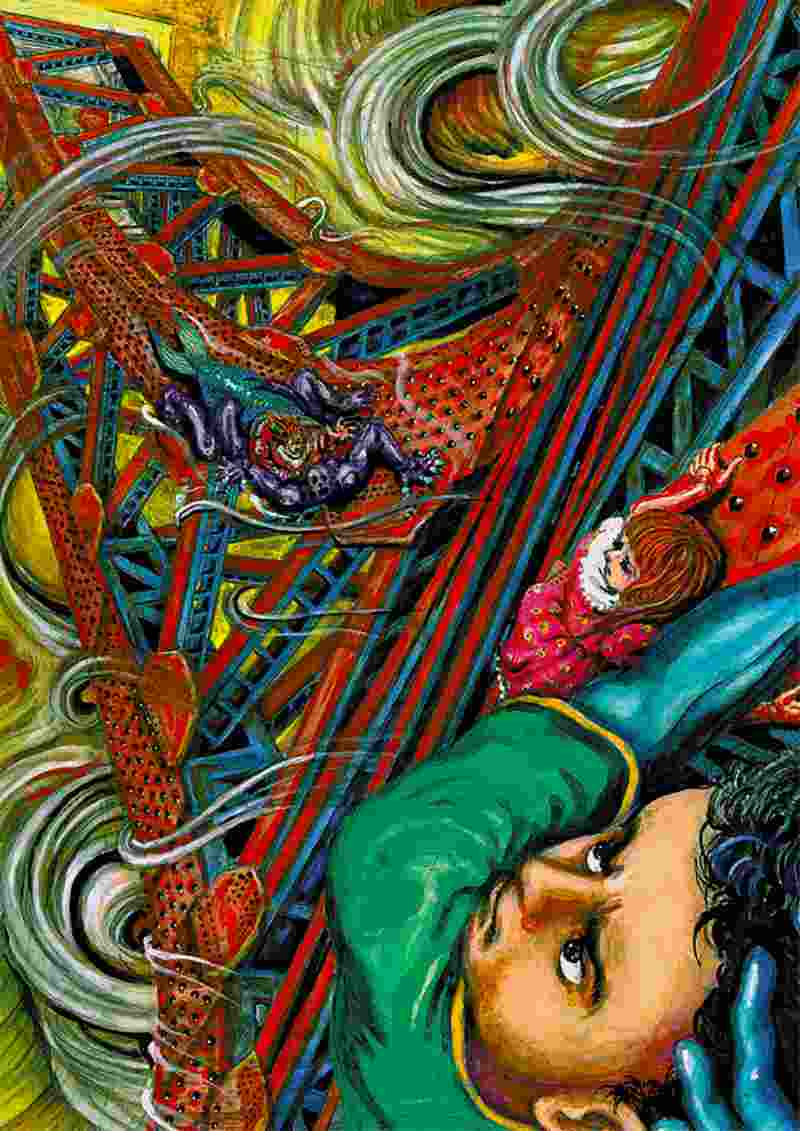
A painting from “ZOKU-SHINGO Small Robots Shingo Museum”
Though the two stories may appear linked, according to Umezz, this is not the case, precisely speaking. “The series came about accidentally, as it were,” he recalled. “Although it was really tough to paint everything, the scenes all came to me very naturally and easily. I didn’t think about the story at all.”
The exhibition was first proposed in 2017. “To be honest, I wasn’t very keen on the idea initially,” Umezz confided.
However, he dramatically changed his mind when he scooped the Heritage Award for “Watashi wa Shingo” at the Angouleme International Comics Festival in France in January 2018 — an award presented for work deemed important to posterity.
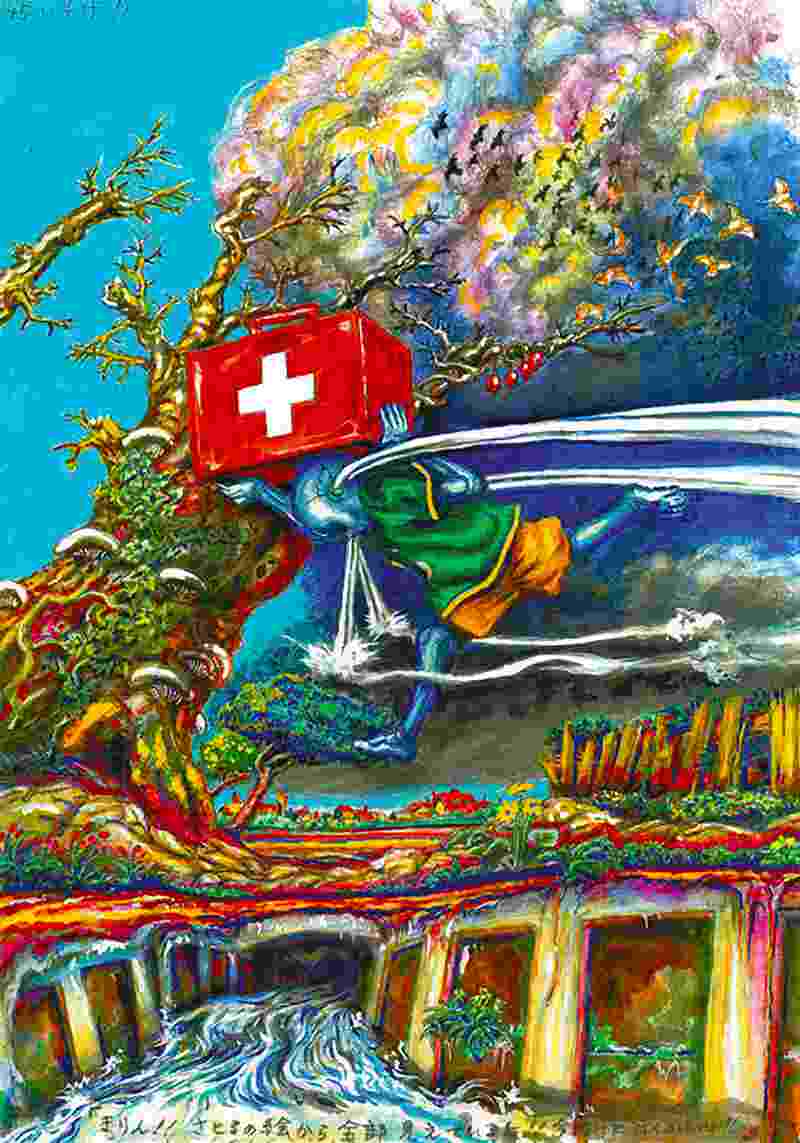
A painting from “ZOKU-SHINGO Small Robots Shingo Museum”
“Compliments pump me up big-time,” Umezz enthused. “I was like, ‘I’m going to paint and paint!’”
Initially, he created pencil drawings for the whole series, then traced and colored them with acrylic gouache. It took him four years to complete everything. The pencil drawings, which exude a mysterious charm, can also be seen at the exhibition venue.
Out with the old
The exhibition has an impressive tagline: “Manga no teppen kara ato no teppen e tobiutsure” (Leap from the pinnacle of manga to the pinnacle of art). But what does Umezz think are the differences between manga and art?
“I think manga is the ‘art of connecting,’ while artistic painting is complete in itself,” he mused. “For example, take a Western religious painting that merely depicts one climactic scene from a particular story. But I’m a mangaka, so I sense a lack of fun if there’s no [complete] story. I thought it would be cool to create a painting that’s worth looking at as a work of art, but which also has an interesting story — I wanted to pull those two elements together.”
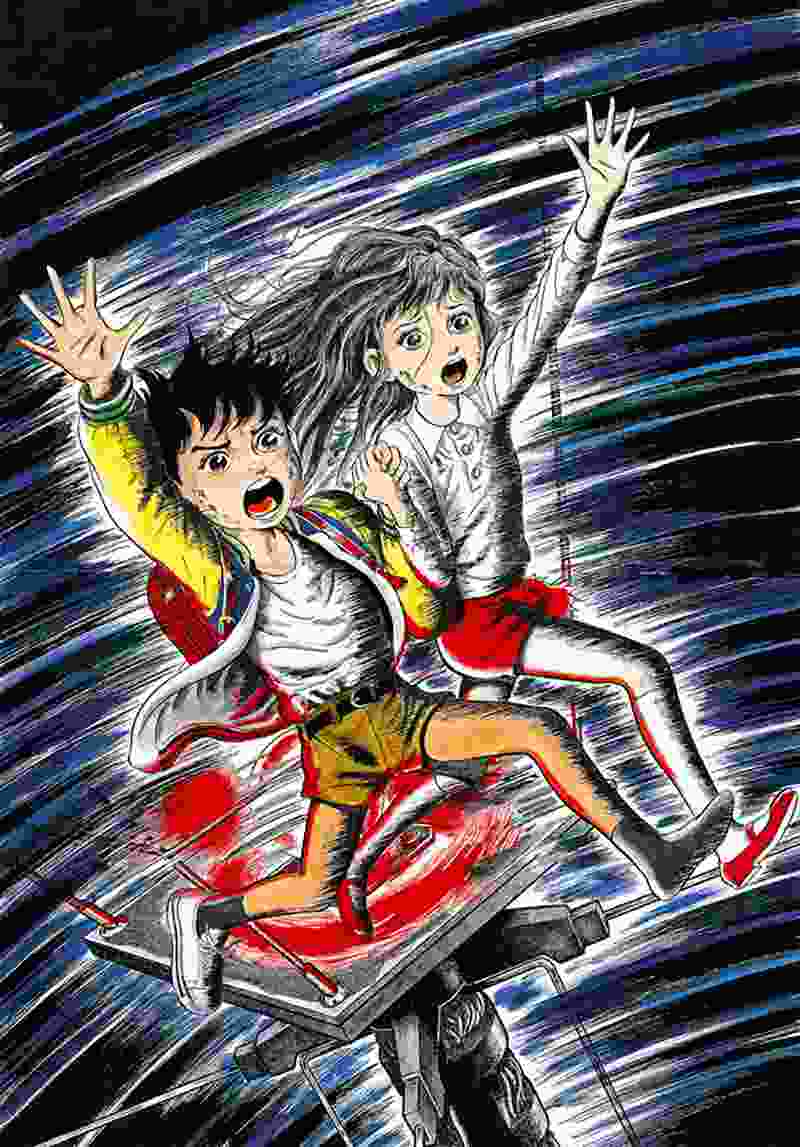
A scene from “Watashi wa Shingo”
Though hailed as a pioneer of horror manga, Umezz has created numerous masterpieces that straddle genres from horror to comedy, including “Orochi”(Orochi: Blood), “Senrei” (Baptism), “Hyoryu Kyoshitsu” (The Drifting Classroom) and “Makoto-chan.” But he has produced no new manga since “Fourteen” (1990-95), a sci-fi epic that deals with the ultimate demise of the human race.
“I’m truly happy that my previous works are highly regarded, but I no longer have the desire to draw manga,” Umezz said. “There was a time when I keenly felt the limitations of the industry, which is all about producing easy-to-read works that sell by the truckload. Throughout my career, I’ve always worked on the premise that whatever I draw next will be something new. I don’t want to lose that vision — and there’s your reason for me wanting to make the leap from manga to art. I believe this exhibition will have a positive influence on manga, too.”
Powerful pages
The exhibition venue sits 250 meters above sea level and affords a view of Tokyo Tower, which appears in the new work. Here, visitors can enjoy the sensation of “floating between reality and fantasy.” Another highlight of the show are the works — inspired by Umezz’s oeuvre — contributed by three contemporary artists.
One of the three, Tomoko Konoike, submitted drawings and other pieces sparked by “Fourteen.” Konoike recalls being terrified as a child by an Umezz horror manga that was carried in a girls’ magazine. “I think those works had a tremendous impact on kids and intruded into their daily lives,” she said.
On the difference between art and manga, Konoike opined, “I guess it’s merely a matter of language.”
She continued: “I think it’s important artistically to consider the best way to pass down the essence of what Mr. Umezz has expressed throughout his career. It could be the darkness of night, the wonder of nature or even scary tales. It’s been a real pleasure taking part [in this exhibition].”
"Culture" POPULAR ARTICLE
-

Van Cleef & Arpels Dazzles with Art Deco Artisanry at Tokyo Exhibit
-

Disney’s ‘Twisted-Wonderland’ Animated Series Puts Villains in Spotlight: New Show Features School Inspired by Classic Disney Films
-

Japan Plans to Distribute Manga Overseas Via New Platform
-

Japanese Craftsman Produces Beautiful and Durable Bags Made of Wood
-
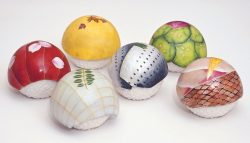
Artist Hiroko Joshin Uses Shippo Cloisonne Technique to Create Pieces Serving as Appetizing Treat for Eyes
JN ACCESS RANKING
-

Japan’s Hopes for Seafood Exports Shot Down in China Spat
-

Japan to Charge Foreigners More for Residence Permits, Looking to Align with Western Countries
-

Keidanren Chairman Yoshinobu Tsutsui Visits Kashiwazaki-Kariwa Nuclear Power Plant; Inspects New Emergency Safety System
-

Japan Exports Rise in October as Slump in U.S. Sales Eases
-

Niigata Gov. to OK Restart of N-Plant; Kashiwazaki-Kariwa May Be Tepco’s 1st Restarted Plant Since 2011




◎上海の日本アニメイベント_20251129YGTGS000921_C-250x168.jpg)




















